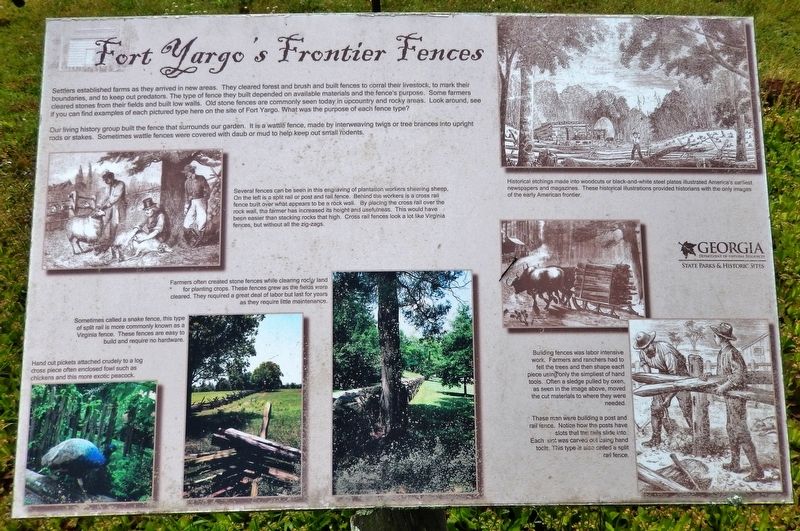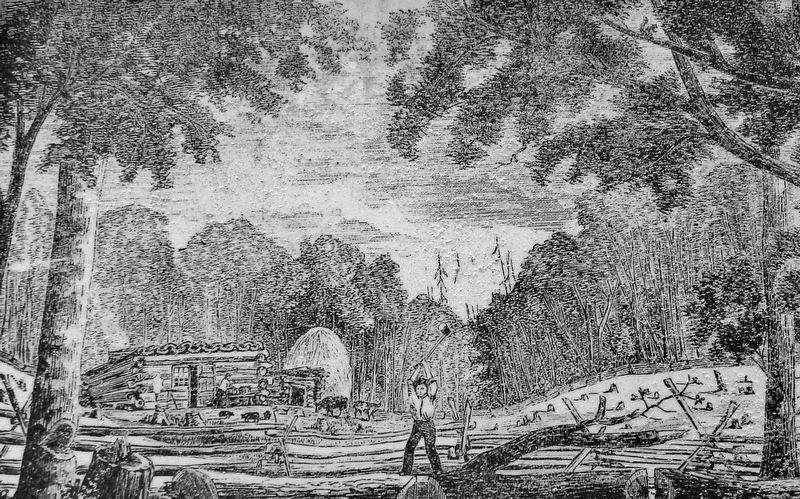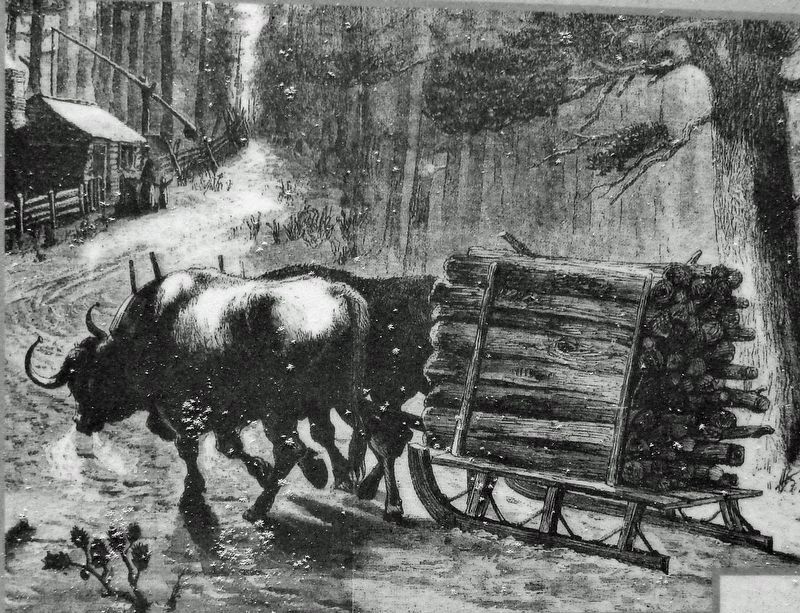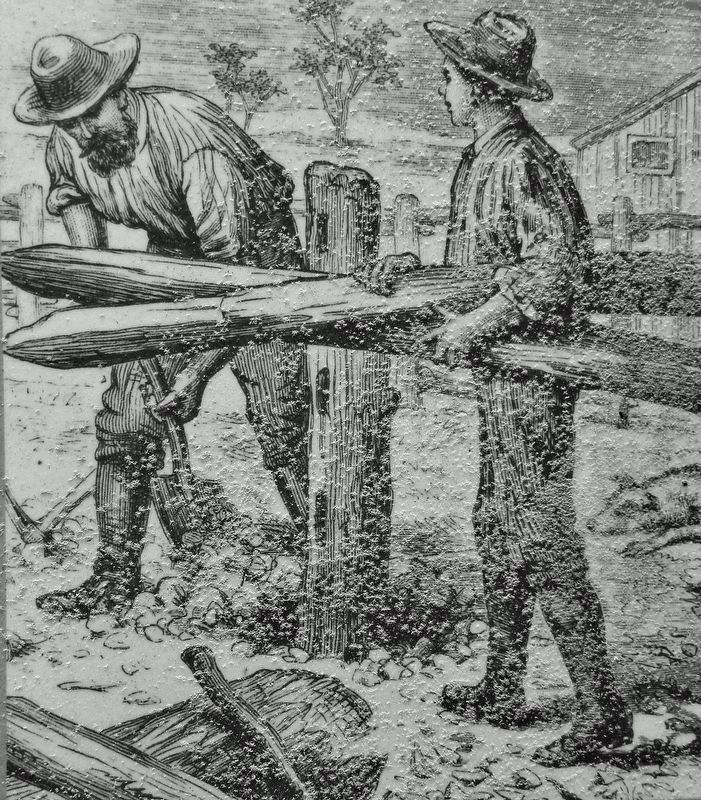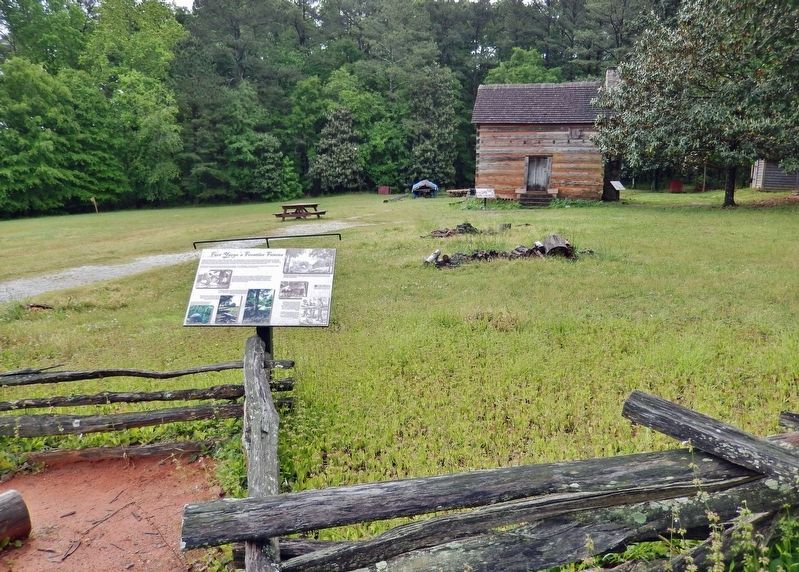Winder in Barrow County, Georgia — The American South (South Atlantic)
Fort Yargo's Frontier Fences
Settlers established farms as they arrived in new areas. They cleared forest and brush and built fences to corral their livestock, to mark their boundaries, and to keep out predators. The type of fence they built depended on available materials and the fence's purpose. Some farmers cleared stones from their fields and built low walls. Old stone fences are commonly seen today in upcountry and rocky areas. Look around, see if you can find examples of each pictured type here on the site of Fort Yargo. What was the purpose of each fence type?
Our living history group built the fence that surrounds our garden. It is a wattle fence, made by interweaving twigs or tree branches into upright rods or stakes. Sometimes wattle fences were covered with daub or mud to help keep out small rodents.
Erected by Georgia Department of Natural Resources, State Parks & Historic Sites.
Topics. This historical marker is listed in these topic lists: Agriculture • Forts and Castles • Parks & Recreational Areas • Settlements & Settlers.
Location. 33° 58.589′ N, 83° 44.11′ W. Marker is in Winder, Georgia, in Barrow County. Marker can be reached from Fort Yargo Road east of South Broad Street (Georgia Highway 81), on the left when traveling south. Marker is located at the Fort Yargo Interpretive Site within Fort Yargo State Park. Touch for map. Marker is in this post office area: Winder GA 30680, United States of America. Touch for directions.
Other nearby markers. At least 8 other markers are within walking distance of this marker. Fort Yargo's Living History Society (here, next to this marker); Fort Yargo's Early History (a few steps from this marker); Fort Yargo (a few steps from this marker); Fort Yargo's Cabin (within shouting distance of this marker); Fort Yargo's Log Structure (within shouting distance of this marker); Fort Yargo's Smokehouse (within shouting distance of this marker); Fort Yargo's Beehive Oven (within shouting distance of this marker); Explore the Unique History of Fort Yargo (approx. 0.2 miles away). Touch for a list and map of all markers in Winder.
Related markers. Click here for a list of markers that are related to this marker. Fort Yargo State Park
Also see . . . Fort Yargo State Park. (Submitted on December 3, 2021, by Cosmos Mariner of Cape Canaveral, Florida.)
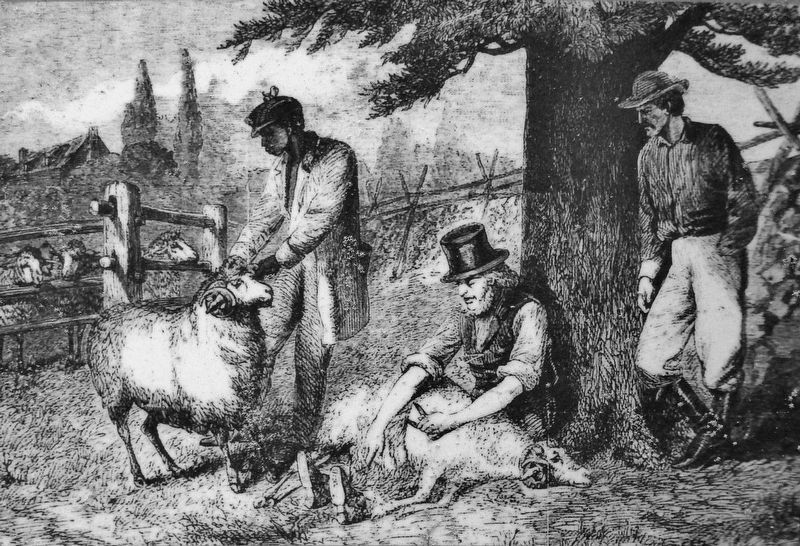
2. Marker detail: Plantation Workers Shearing Sheep
Several fences can be seen in this engraving of plantation workers shearing sheep. On the left is a split rail or post and rail fence. Behind the workers is a cross rail fence built over what appears to be a rock wall. By placing the cross rail over the rock wall, the farmer has increased its height and usefulness. This would have been easier than stacking rocks that high. Cross rail fences look a lot like Virginia fences, but without all the zigzags.
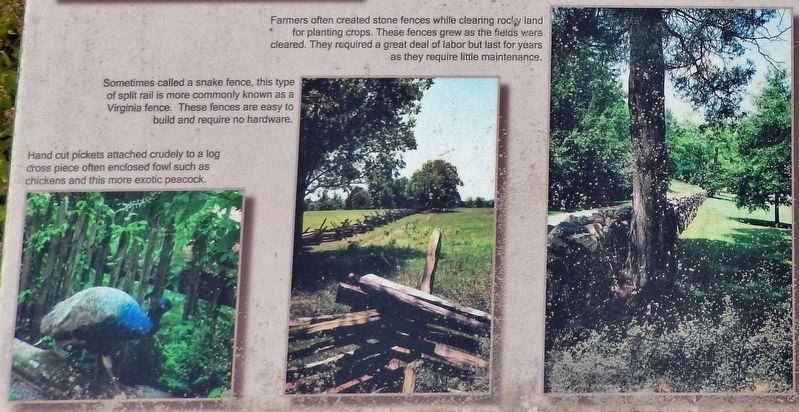
3. Marker detail: Frontier Fence Types
left: Hand cut pickets attached crudely to a log cross piece often enclosed fowl such as chickens and this more exotic peacock.
center: Sometimes called a snake fence, this type of split rail is more commonly known as a Virginia fence. These fences are easy to build and require no hardware.
right: Farmers often created stone fences while clearing rocky land for planting crops. These fences grew as the fields were cleared. They required a great deal of labor but last for years as they require little maintenance.
Credits. This page was last revised on December 4, 2021. It was originally submitted on December 3, 2021, by Cosmos Mariner of Cape Canaveral, Florida. This page has been viewed 236 times since then and 29 times this year. Photos: 1, 2, 3, 4, 5, 6, 7. submitted on December 3, 2021, by Cosmos Mariner of Cape Canaveral, Florida.
